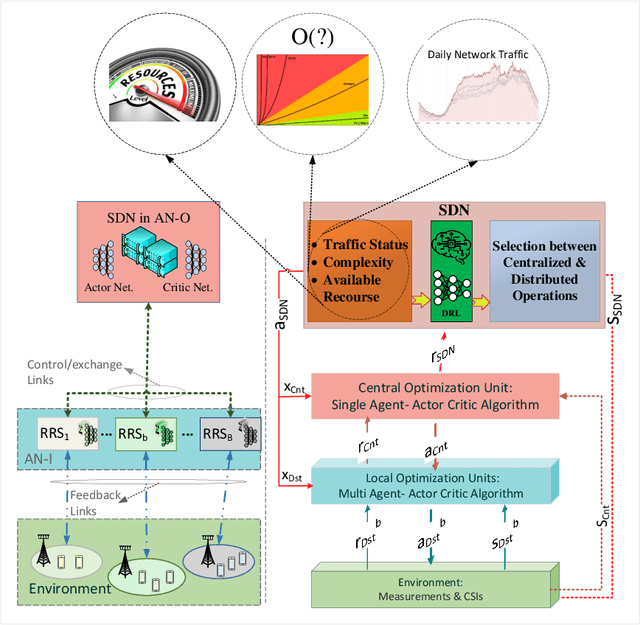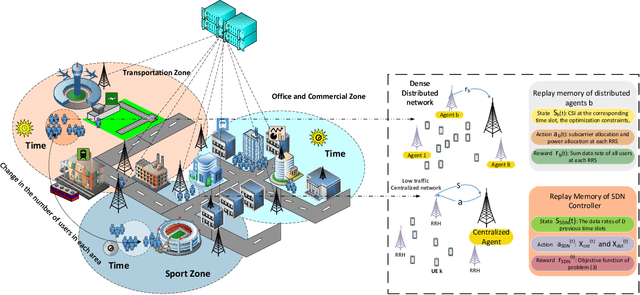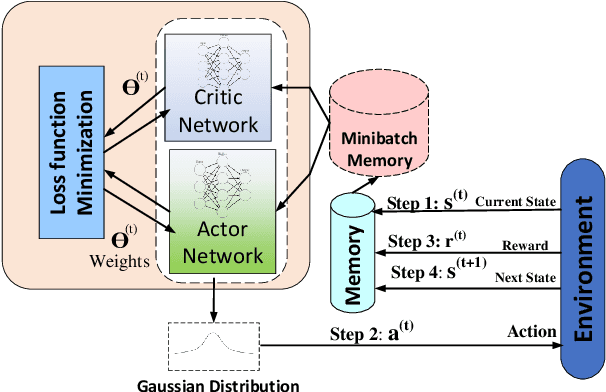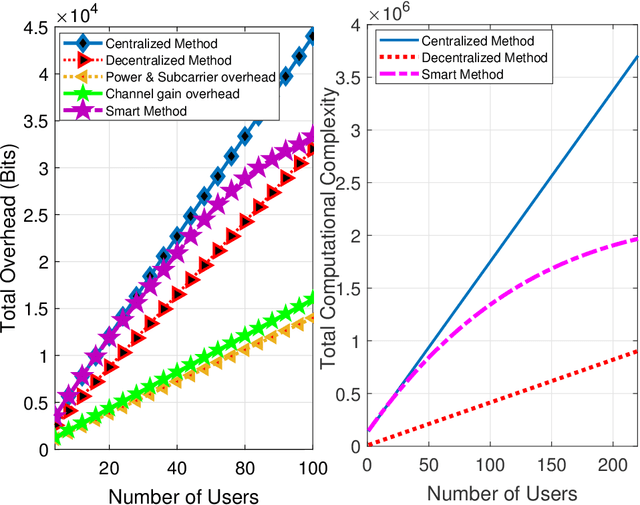Atefeh Rezaei
Resource Allocation for UAV-Assisted Industrial IoT User with Finite Blocklength
Oct 24, 2023


Abstract:We consider a relay system empowered by an unmanned aerial vehicle (UAV) that facilitates downlink information delivery while adhering to finite blocklength requirements. The setup involves a remote controller transmitting information to both a UAV and an industrial Internet of Things (IIoT) or remote device, employing the non-orthogonal multiple access (NOMA) technique in the first phase. Subsequently, the UAV decodes and forwards this information to the remote device in the second phase. Our primary objective is to minimize the decoding error probability (DEP) at the remote device, which is influenced by the DEP at the UAV. To achieve this goal, we optimize the blocklength, transmission power, and location of the UAV. However, the underlying problem is highly non-convex and generally intractable to be solved directly. To overcome this challenge, we adopt an alternative optimization (AO) approach and decompose the original problem into three sub-problems. This approach leads to a sub-optimal solution, which effectively mitigates the non-convexity issue. In our simulations, we compare the performance of our proposed algorithm with baseline schemes. The results reveal that the proposed framework outperforms the baseline schemes, demonstrating its superiority in achieving lower DEP at the remote device. Furthermore, the simulation results illustrate the rapid convergence of our proposed algorithm, indicating its efficiency and effectiveness in solving the optimization problem.
Energy-Aware Resource Allocation and Trajectory Design for UAV-Enabled ISAC
Feb 20, 2023



Abstract:In this paper, we investigate joint resource allocation and trajectory design for multi-user multi-target unmanned aerial vehicle (UAV)-enabled integrated sensing and communication (ISAC). To improve sensing accuracy, the UAV is forced to hover during sensing.~In particular, we jointly optimize the two-dimensional trajectory, velocity, downlink information and sensing beamformers, and sensing indicator to minimize the average power consumption of a fixed-altitude UAV, while considering the quality of service of the communication users and the sensing tasks. To tackle the resulting non-convex mixed integer non-linear program (MINLP), we exploit semidefinite relaxation, the big-M method, and successive convex approximation to develop an alternating optimization-based algorithm.~Our simulation results demonstrate the significant power savings enabled by the proposed scheme compared to two baseline schemes employing heuristic trajectories.
Smart Resource Allocation Model via Artificial Intelligence in Software Defined 6G Networks
Feb 09, 2023Abstract:In this paper, we design a new flexible smart software-defined radio access network (Soft-RAN) architecture with traffic awareness for sixth generation (6G) wireless networks. In particular, we consider a hierarchical resource allocation model for the proposed smart soft-RAN model where the software-defined network (SDN) controller is the first and foremost layer of the framework. This unit dynamically monitors the network to select a network operation type on the basis of distributed or centralized resource allocation procedures to intelligently perform decision-making. In this paper, our aim is to make the network more scalable and more flexible in terms of conflicting performance indicators such as achievable data rate, overhead, and complexity indicators. To this end, we introduce a new metric, i.e., throughput-overhead-complexity (TOC), for the proposed machine learning-based algorithm, which supports a trade-off between these performance indicators. In particular, the decision making based on TOC is solved via deep reinforcement learning (DRL) which determines an appropriate resource allocation policy. Furthermore, for the selected algorithm, we employ the soft actor-critic (SAC) method which is more accurate, scalable, and robust than other learning methods. Simulation results demonstrate that the proposed smart network achieves better performance in terms of TOC compared to fixed centralized or distributed resource management schemes that lack dynamism. Moreover, our proposed algorithm outperforms conventional learning methods employed in recent state-of-the-art network designs.
Toward a Smart Resource Allocation Policy via Artificial Intelligence in 6G Networks: Centralized or Decentralized?
Feb 18, 2022



Abstract:In this paper, we design a new smart softwaredefined radio access network (RAN) architecture with important properties like flexibility and traffic awareness for sixth generation (6G) wireless networks. In particular, we consider a hierarchical resource allocation framework for the proposed smart soft-RAN model, where the software-defined network (SDN) controller is the first and foremost layer of the framework. This unit dynamically monitors the network to select a network operation type on the basis of distributed or centralized resource allocation architectures to perform decision-making intelligently. In this paper, our aim is to make the network more scalable and more flexible in terms of achievable data rate, overhead, and complexity indicators. To this end, we introduce a new metric, throughput overhead complexity (TOC), for the proposed machine learning-based algorithm, which makes a trade-off between these performance indicators. In particular, the decision making based on TOC is solved via deep reinforcement learning (DRL), which determines an appropriate resource allocation policy. Furthermore, for the selected algorithm, we employ the soft actor-critic method, which is more accurate, scalable, and robust than other learning methods. Simulation results demonstrate that the proposed smart network achieves better performance in terms of TOC compared to fixed centralized or distributed resource management schemes that lack dynamism. Moreover, our proposed algorithm outperforms conventional learning methods employed in other state-of-the-art network designs.
 Add to Chrome
Add to Chrome Add to Firefox
Add to Firefox Add to Edge
Add to Edge